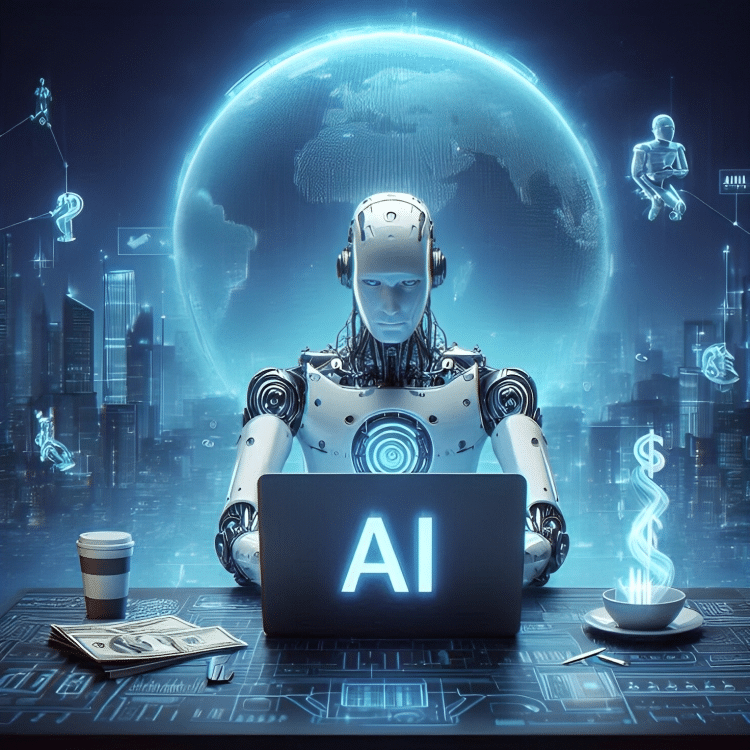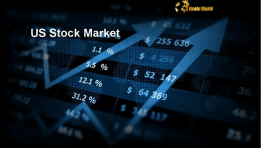The emergence of Artificial Intelligence (AI) marks a technological turning point, promising to revolutionize entire industries and boost global productivity. However, alongside this innovative promise, there is growing concern about its implications for the labor market, particularly for the future of young workers seeking to enter the technology industry. Recent data and analyses from leading economists are beginning to paint a complex picture, indicating that the impact of AI is no longer a future scenario, but a reality that has already begun to reshape the rules of the game.
The Data Tells a Worrying Story
An analysis of the U.S. labor market reveals the first clear signs of AI’s impact, with young tech workers being the primary group affected at this stage. According to Joseph Briggs, a senior economist at Goldman Sachs, employment data indicates a hiring pullback in the tech sector. Specifically, the unemployment rate among tech workers aged 20 to 30 has risen by 3 percentage points since the beginning of the year. While this figure does not yet reflect a market-wide shock, it serves as a significant warning sign, as it expresses a focused trend harming the industry’s future generation. According to Briggs, although most companies have not yet fully implemented AI systems, those that have already adopted the technology are showing a clear slowdown in the hiring of young talent.
Why Specifically Young Workers? The Automation of Entry-Level Roles
The reason young workers are the first to feel the impact of AI lies in the nature of entry-level jobs in the tech industry. CEOs of leading technology companies have begun to speak openly about how AI allows them to “streamline the organization.” In practice, this streamlining translates into a freeze on hiring for junior positions. These roles often involve routine and repetitive tasks, such as basic data analysis, simple code writing, or initial technical support—tasks that current AI can perform faster and more efficiently than a human employee. As a result, companies prefer to invest in automated tools rather than hire young workers, thereby saving costs and increasing output. This trend not only reduces the supply of jobs for recent graduates but also threatens the career progression and professional development of an entire generation.
A Glimpse into the Future? Goldman Sachs’ Forecasts
The picture broadens when examining long-term forecasts. According to Goldman Sachs’ models, the automation process is expected to affect the entire labor market. In the baseline scenario, economists estimate that about 6% to 7% of all workers in the United States could lose their jobs to AI-based automation over the next decade. However, Briggs emphasizes that the transition could be “more painful” if the pace of technology adoption by companies is faster than anticipated. Such an acceleration could occur as a result of rapid technological progress or an economic slowdown that pushes companies toward aggressive cost-cutting. The most extreme scenario involves the achievement of “Artificial General Intelligence” (AGI)—a system with learning and adaptation capabilities similar to the human brain, whose impact on the labor market could be far more dramatic and profound.
The Other Side of the Coin: Productivity and New Opportunities
It is important to maintain a balanced perspective and recognize that AI is not just a threat, but also an unprecedented opportunity. The automation of routine tasks is expected to lead to a significant increase in corporate productivity and profitability, which could translate into economic growth and increased shareholder wealth. History teaches that technological revolutions, despite causing short-term disruptions in the labor market, ultimately lead to the creation of new roles and employment categories that did not exist before. In the case of AI, we may see an increased demand for professions that require skills complementary to machine capabilities: critical thinking, creativity, emotional intelligence, and the management of complex AI systems. The main challenge for young workers will be to acquire these skills and adapt to the new reality.
Conclusion and a Look Ahead: Navigating a Changing Reality
The data from the U.S. tech market provides clear evidence that Artificial Intelligence is no longer a theoretical concept but a tangible force affecting the lives of young workers. The pullback in hiring for entry-level positions is a wake-up call that requires a new approach. This is not investment advice, but a professional analysis of an emerging trend. The future is not expected to be a battle between humans and machines, but an era of collaboration, where success will belong to those who know how to leverage technology rather than compete with it. For the younger generation, the challenge is twofold: not only to acquire technical knowledge but also to develop mental flexibility and a capacity for continuous learning, which will be the key to thriving in a dynamic and changing labor market. The transition to the AI era will require adaptation not only from workers but also from education systems, companies, and governments, who will need to work together to ensure that technological progress serves all of society.
Comparison, examination, and analysis between investment houses
Leave your details, and an expert from our team will get back to you as soon as possible
* This article, in whole or in part, does not contain any promise of investment returns, nor does it constitute professional advice to make investments in any particular field.
To read more about the full disclaimer, click here- orshu
- •
- 15 Min Read
- •
- ago 2 minutes
 Investing Smarter: How Structured Products Can Outperform Direct Index Investments
Investing Smarter: How Structured Products Can Outperform Direct Index Investments
When it comes to investing, especially in uncertain market conditions, choosing the right strategy can be the difference between peace
- ago 2 minutes
- •
- 15 Min Read
When it comes to investing, especially in uncertain market conditions, choosing the right strategy can be the difference between peace
- orshu
- •
- 7 Min Read
- •
- ago 16 minutes
 July 2025 Earnings Season: Strong Beats, Tepid Reactions
July 2025 Earnings Season: Strong Beats, Tepid Reactions
Corporate earnings in July 2025 have outperformed expectations at historic levels—yet the market’s reaction remains surprisingly muted. A closer look
- ago 16 minutes
- •
- 7 Min Read
Corporate earnings in July 2025 have outperformed expectations at historic levels—yet the market’s reaction remains surprisingly muted. A closer look
- orshu
- •
- 7 Min Read
- •
- ago 32 minutes
 The Americas Markets Close Higher: A Broad-Based Rally With a Twist
The Americas Markets Close Higher: A Broad-Based Rally With a Twist
The close of trading in the Americas markets today painted a predominantly positive picture, with major North and South American
- ago 32 minutes
- •
- 7 Min Read
The close of trading in the Americas markets today painted a predominantly positive picture, with major North and South American
- orshu
- •
- 9 Min Read
- •
- ago 4 hours
 Shopify Reports 31% Revenue Growth in Stellar Quarter, Posts Strong Profitability
Shopify Reports 31% Revenue Growth in Stellar Quarter, Posts Strong Profitability
E-commerce giant Shopify Inc. announced its financial results for the second quarter of 2025, revealing a picture of accelerated growth
- ago 4 hours
- •
- 9 Min Read
E-commerce giant Shopify Inc. announced its financial results for the second quarter of 2025, revealing a picture of accelerated growth












